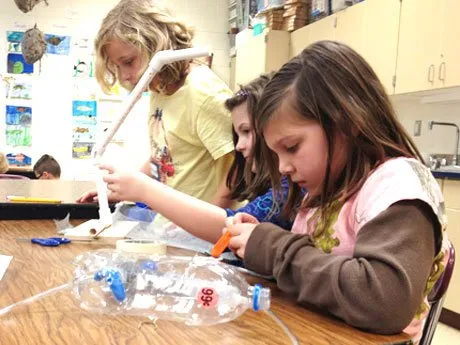Astronomy Activities and Fireworks

1/29-2/2
Workshop Activities
1. Craft – Art in the Sky – Students draw constellations
2. Key Points – Gods in the Sky – History of astronomy studies
3. Collaborative – Split Light – Examining refracted light
4. Writing – Planet Poetry – Writing poems about planets
5. Math/Logic – Build the Solar System – Solar system math game
6. Genius Principle – Feeling Small – feeling generous in this vast universe
7. Big Activity – Leonardo's Pageant – presenting poems
8. Movement - Eight Planets – a four corners-type of game
Minecraft Class
Build a scale model of the universe
Discover the moon phases
Visit the moon
Build challenge: make a space station
Upcoming Activities
Call to Adventure – Livestream every Tuesday morning at 6:45 AM on Celebration Education Families Facebook page: https://www.facebook.com/groups/CelebrationEdu/
Field Trips https://www.celebrationeducation.com/field-trips
Space Walk – 1/31 Fountain Valley
Colonial Farm Life at Colonial Chesterfield at Riley's Farm 1/31
Weekly Teen Hang Outs – Wednesdays in Santa Ana, 2-8 https://www.facebook.com/events/384701815307729/
Fireworks
Read through the fireworks and choose five that you think might interest your child. Allow him or her to select 1-3 of them.
Observe like Leonardo. Leonardo valued his own observation above anything he read in a book. He wrote that his writings would be based on a “much greater and much more noble” authority than any written description. In fact, he frequently challenged the current knowledge of the time. For example, Leonardo did not accept the common belief that the moon had its own source of light. Through observation, he concluded correctly that the sun’s reflection lights the moon. He also observed the moon for many days and noticed that the phases of the moon occurred regularly. He recorded his findings in his notebooks and drew the phenomena of earthshine, when the unlit portion of the moon is still visible in the night sky. Leonardo’s emphasis on experience is a critical element in the development of the scientific theory. His notebooks contain examples of experiments he conducted again and again by just changing one variable. Like Leonardo, observe the moon at the same time each evening. Sketch in your journal what you see, along with a written description of your observations. You can also create a chart to track track the moon phases.
Calculate the distance between Earth and the moon, the sun, and other planets.
Observe the night sky. Discover, draw, and name your own constellations. Use black construction paper and white chalk.
The planets are named after ancient Roman Gods. Read some about these gods. Why do you suppose the planets were given their particular names? Write about it in your notebook.
For a wedding, Leonardo once put on a stage performance. He had people represent the sun, moon, and planets. Each recited a poem. Write your own poems about the sun, moon, and planets. Plan a masque. Make up costumes representing each. Perform your masque for your family, friends, and/or classmates.
Visit an observatory.
Try some of these space activities: https://www.amnh.org/explore/ology/astronomy
Make a model of the solar system.
Make constellations: http://www.zunal.com/webquest.php?w=11104
Watch The Elegant Universe by NOVA.
Work on your genius project.
Play math games.
See a scale model of the solar system: https://www.space.com/30610-scale-of-solar-system-amazing-video.html
Read fiction and non-fiction about the solar system and constellations.
Visit a planetarium.
Find objects around the house that demonstrate the proportional difference in size between the earth and the sun.
Make a star gazer: http://www.crayola.com/lesson-plans/detail/star-gazer-lesson-plan/
Make a galactic mobile: http://www.crayola.com/lesson-plans/detail/metallic-galactic-mobile-lesson-plan/
Make a timeline of astronomical discoveries.
Memorize the planets in order.
Calculate your weight on other planets: http://www.exploratorium.edu/ronh/weight/index.html
Learn about, observe, draw and write about the moon on 1/31. It is a blue supermoon with a lunar eclipse!




















